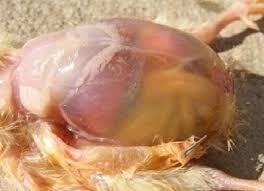Explore all the information on
Poultry nutrition - Other additives
Alternative feed additives have promising importance in broiler production due to the ban on the use of certain antibiotics. The most used antibiotic alternatives in broiler production are phytogenics, organic acids, prebiotics, probiotics, enzymes, and their derivatives. Antibiotic alternatives have been reported to increase feed intake, stimulate digestion, improve feed efficiency, increase growth performance, and reduce the incidence of diseases by modulating the intestinal microbiota and immune system, inhibiting pathogens, and improving intestinal integrity. Simply, the gut microbiota is the target to raise the health benefits and growth-promoting effects of feed additives on broilers. Therefore, naturally available feed additives are promising antibiotic alternatives for broilers.
An immunomodulator is any substance that helps to regulate the immune system. The function and efficiency of the immune system may be influenced by various exogenous and endogenous factors resulting in either immunosuppression or immunostimulation. Several compounds with an...
Comments : 2
Recommendations: 0
2020 Summary in Liptosa The year 2020 is over. It has been, undoubtedly, a very different and challenging year that has left uncertainty and immeasurable losses, both personally and professionally, and...
Comments : 0
Recommendations: 2
DIGEST FAST® allows to reduce up to 10kg of fat in the ration, an important saving that leaves us free space in formulation. Therefore, in addition to saving the cost of fat, the nutritionist has a valuable tool that...
Comments : 2
Recommendations: 4
...
Comments : 4
Recommendations: 5
Andres Schlageter (University of Nebraska) explained the work of the National Animal Nutrition Program and the relevance of their database, during the Multi-State Poultry Feeding and Nutrition Conference in Indianapolis, USA. ...
Comments : 2
Recommendations: 0
Life Rainbow Biotech has developed a liquid type nutrition supplement – Gano-met® provides broiler and layer essential nutrition instantly and stress relief. Gano-met® contains extracted Ganoderma lucidum and methionine hydroxy analog (MHA), riches in active compounds such as required amino acid, polysaccharides, and triterpenoids. Ganoderma lucidum is an edible traditional medicine mushroom, also known as “Lingzhi”(Chinese) and...
Comments : 0
Recommendations: 3


Speculation over the Provisional Ruling on Anti-dumping Duties of Lysine by the EU Against China
Suggested link


Dietary starch influences growth performance, nutrient utilisation and digestive dynamics of protein and amino acids in broiler chickens offered low-protein diets
Suggested link
Background
Antibiotic Growth Promotors (AGPs) are a group of feed additives widely used to improve animal health and performance. Mode of action is actually still an area of debate, but it is clear we have moved away from a simple model of reduction of pathogens / reduction of microbiota competition with the host animal to one where reduction of inflammation and modulation of immune response is a more likely explanation.
AGPs are effective in enhancing...
Comments : 8
Recommendations: 10
Highlights of this research Chronic Inflammation means losses and can cause a reduction in growth up to 30% Chronic gut inflammation often seen in field...
Comments : 3
Recommendations: 0


Oxidative stress in animal production: how is it generated and how can we reduce it?
Suggested link
Introduction Earlier, it was hypothesized that growth promoting effects of Antimicrobial Growth Promoters (AGPs) in poultry feed are attributed to their non-antibiotic anti-inflammatory...
Comments : 1
Recommendations: 3
Feed challenges in South East Asia Microbiological quality of feed intended for animal consumption is a relevant factor in the livestock industry because of the effect it has on the health status and productive efficiency of the animals, but also for the potential impact it may have on public health. As it occurs worldwide, there are multiple microbiological challenges that can negatively affect the feed quality in South East Asia. Main difference present in the region...
Comments : 0
Recommendations: 1
.jpg&w=3840&q=75)

40 Years of Success in China with Hy-Line (Mandarin-language video)
Suggested link
The growing global livestock production is moving away from antibiotic growth promoters and coccidiostats, means that the industry will therefore face new challenges impacting gut health. As a consequence, gut health management has become a key focus in the livestock production. The role of betaine and its physiological functions Over the last years, the use of betaine in animal feed diets has moved from selective utilization, to that of a core ingredient in key feed...
Comments : 0
Recommendations: 4
INTRODUCTION In China, Spain, Italy, Mexico and Peru, amongst other countries, the consumer demands chicken with yellow skin pigmentation. Since skin pigmentation is associated with health status and product freshness (Breithaupt 2007, Liu et al 2008, Hernandez-Velasco et al 2014), there is a large volume of whole chicken or parts commercialized with the skin (Baker and Günther 2004). The inclusion level of dietary pigment for broiler chickens...
Comments : 0
Recommendations: 0


Feed Conversion Ratio: Unveiling the Secrets of Sustainable Livestock Production
Suggested link
Most of our customer relationships begin with a unique application challenge, and this case was no exception. An internist at a Midwestern medical hospital contacted us to discuss how our technology might be applied to reduce the use of antibiotics in monogastric animals; his concept was to deliver a blend of organic acids into the intestines to target harmful bacteria instead – essentially pioneering a solution to the growing problem of antibiotic resistance in animals and in...
Comments : 1
Recommendations: 4
During a U.S. Soybean Export Council digital customer workshop, experts like Massimiliano Petracci and Giulia Baldi from University of Bologna, in Italy, explained the importance of adequate nutrition in order to get the desired poultry meat quality.
Petracci discussed carcass quality and some of the factors that influence defects. These factors include poultry handling and slaughtering procedures, and stunning. Petracci also shared the role of diet on carcass quality, emphasizing...
Comments : 0
Recommendations: 1
Believe it or not, most of the encapsulation and microencapsulation techniques in use today—spray drying, spray chilling and fluidized beds, among them—haven’t evolved much since they were first introduced during the World War II era. But market...
Comments : 2
Recommendations: 4
Beneficial effects of CoQ10 supplementation have been demonstrated in human patients with cardiovascular disease , hypertension , and chronic obstructive pulmonary disease. #Ascites, one of most common metabolic diseases in broilers, causes great financial losses ($1 billion p.a)to poultry farmers around the world. Etiology of ascites in chickens surrounds 3 aspects: (1) Pulmonary hypertension, (2) Miscellaneous cardiac pathologies, and (3) Cellular damage caused by reactive oxygen species....
Comments : 1
Recommendations: 1
INTRODUCTION Resistance of pathogenic bacteria towards anti-microbials forced poultry industry to explore alternative solutions like prebiotics, probiotics, organic acids, bacteriophages, antimicrobial peptides, lysozymes, lactoferrins and phytogenics / essential oils (EOs). ...
Comments : 1
Recommendations: 3
DESCRIPTION OF PROBLEM The main interests of animal nutritionists are in biology, not econometrics. As a result, the economic interpretation of feeding practices has practically been ignored in animal nutrition texts and in teaching programs. The development and implementation of easy, customized software models should facilitate the teaching of (and increase interest in) the economic ramifications of choices in animal nutrition and...
Comments : 0
Recommendations: 1





.jpg&w=3840&q=75)




.mp4&w=3840&q=75)


.mp4&w=3840&q=75)



















